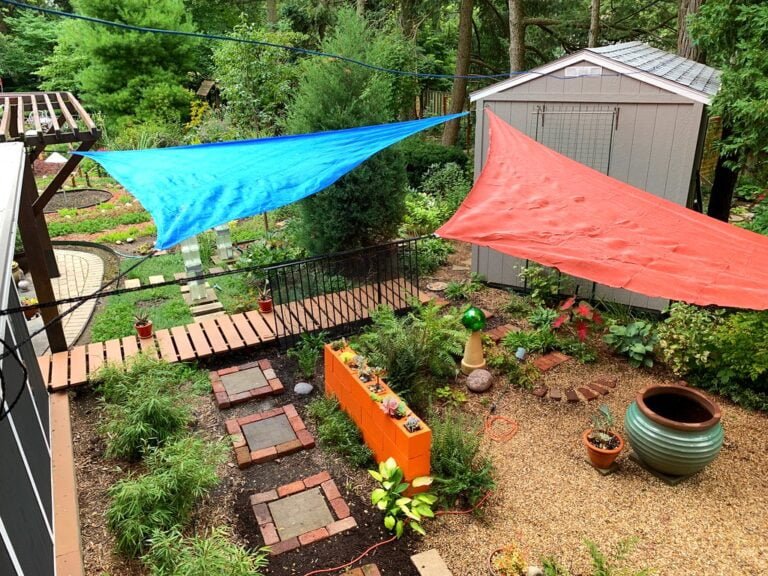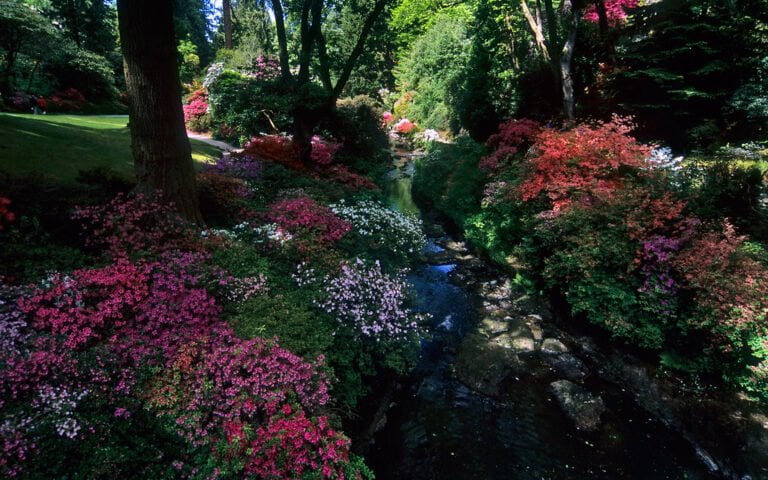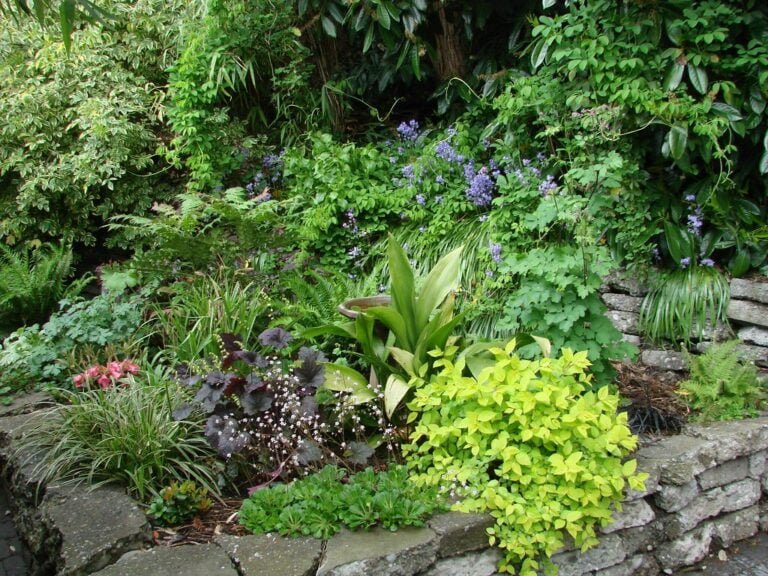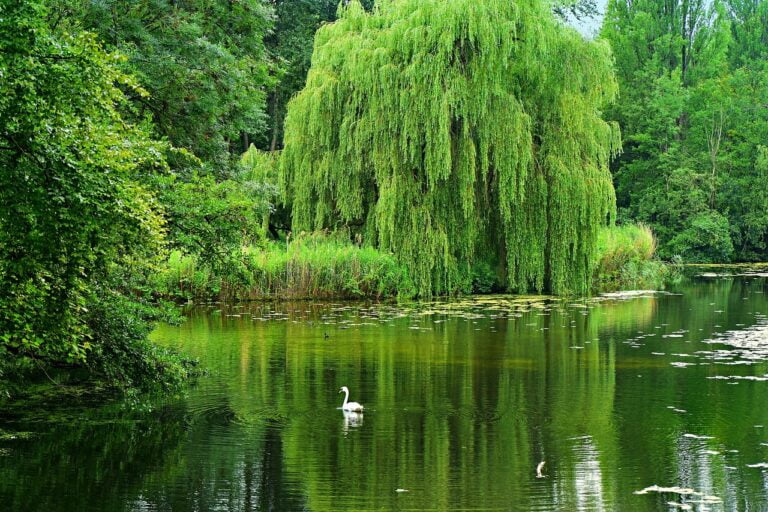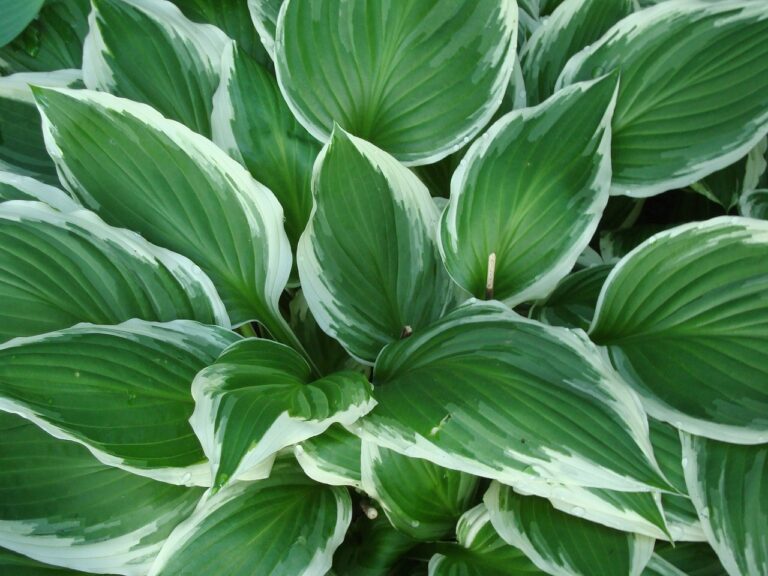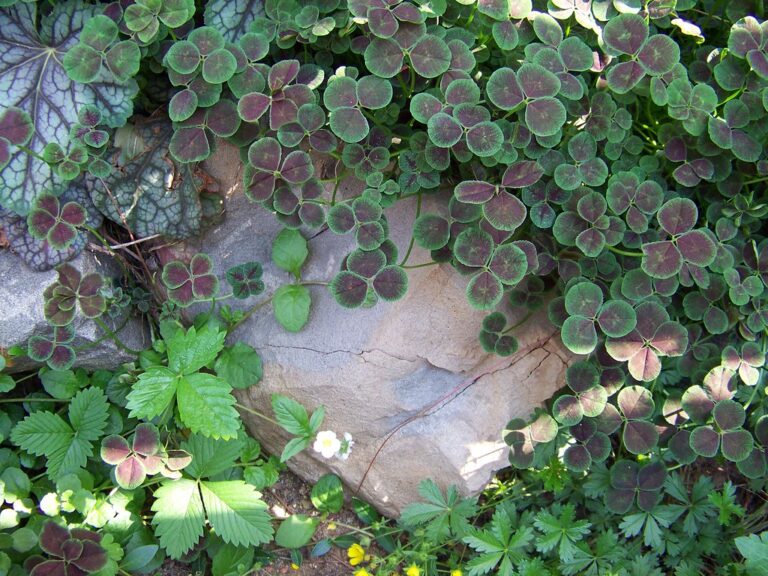Exploring the Best Climbing Flowers for Shaded Areas
Looking to add some vibrant color and natural beauty to your shaded areas? Discover the best climbing flowers for your space! In this article, we'll explore a variety of options specifically suited for partial shade and deep shade. Whether you're looking for low-maintenance options or ways to enhance vertical spaces, we've got you covered. Learn how to train and mix these climbing flowers to create a stunning shaded garden. Plus, we'll help you choose the right support structures for your climbing flowers.
Benefits of Climbing Flowers in Shade
Discover the numerous benefits of growing climbing flowers in shaded areas. Not only do these beautiful blooms add a touch of elegance to your garden, but they also serve a practical purpose. Climbing flowers in shade can provide much-needed privacy and shade to your outdoor spaces. Imagine sitting under a pergola covered in vibrant, trailing flowers, enjoying a cool and peaceful retreat from the sun's harsh rays. Additionally, these flowers can help to cool down the surrounding areas, creating a more comfortable environment for you and your loved ones to relax and unwind. With their ability to thrive in shade, these climbing flowers bring life and beauty to areas that may otherwise be overlooked. So why not transform your shaded spaces into a stunning oasis with these versatile and practical climbing flowers?
Factors to Consider for Shaded Climbing Flowers
When choosing shaded climbing flowers, consider the specific requirements of each plant to ensure successful growth. One factor to consider is the amount of shade the area receives. Some climbing flowers can tolerate partial shade, while others require deep shade. It's important to choose flowers that are adapted to the specific amount of shade in your garden. Another factor to consider is the soil type. Some climbing flowers prefer well-draining soil, while others can tolerate heavier soils. Additionally, consider the height and spread of the plant. Make sure you have enough vertical space for the climbing flowers to grow and support structures for them to climb on. Lastly, consider the maintenance requirements. Some climbing flowers may need regular pruning or fertilizing. By considering these factors, you can choose the right shaded climbing flowers for your garden and ensure their successful growth.
Top 5 Climbing Flowers for Partial Shade
To find the best climbing flowers for partial shade, you should consider the following options. First on the list is the Clematis, a versatile flower that thrives in partial shade and produces vibrant blooms in various colors. Next is the Climbing Hydrangea, which not only adds beauty to your garden but also provides a pleasant fragrance. Another great choice is the Honeysuckle vine, with its sweet-smelling flowers that attract hummingbirds and butterflies. For a touch of elegance, the Jasmine vine is an excellent option, as it produces delicate white flowers and releases a heavenly scent. Lastly, the Morning Glory is a classic favorite, known for its colorful trumpet-shaped blooms that open in the morning and close in the afternoon. These climbing flowers will add charm and beauty to your partially shaded areas, making them a perfect choice for your garden.
Best Climbing Flowers for Deep Shade
Looking for climbing flowers that thrive in deep shade? There are several options that you can consider. One of the best choices is the climbing hydrangea. With its large, white flowers and glossy green leaves, it adds a touch of elegance to any shaded area. Another option is the sweet autumn clematis, which produces a cascade of small white flowers that release a lovely fragrance. If you prefer a pop of color, the climbing fuchsia is a great option. Its vibrant blooms in shades of pink and purple will brighten up any dark corner. Lastly, the climbing rose is a classic choice that brings beauty and fragrance to the shade. With these flowers, you can turn even the darkest corner of your garden into a blooming oasis.
Low-Maintenance Climbing Flowers for Shaded Areas
For low-maintenance care, consider selecting resilient climbing flowers for shaded areas. These flowers are perfect for those who desire a beautiful garden without the hassle of constant upkeep. One option is the Clematis, a versatile and hardy flower that thrives in shade. Its sprawling vines and colorful blooms add a touch of elegance to any space. Another low-maintenance choice is the Climbing Hydrangea, known for its ability to tolerate shade and adapt to various soil conditions. Its large, showy flowers create a stunning visual display. Lastly, the Sweet Autumn Clematis is a great choice for shaded areas. This flower blooms profusely in the late summer and early fall, filling your garden with a delightful fragrance. These low-maintenance climbing flowers are a fantastic addition to any shaded garden, providing beauty without the constant need for attention.
How to Care for Climbing Flowers in Shade
For those who value low-maintenance care, you may be wondering how often you should tend to your climbing flowers in shaded areas. While climbing flowers in shaded areas require less maintenance compared to those in full sun, they still need some care to thrive. One important aspect of caring for climbing flowers in shade is ensuring they receive enough water. Shaded areas tend to have higher humidity levels, so you may not need to water them as frequently as those in full sun. However, it's important to monitor the soil moisture and water when it feels dry. Another key aspect is providing proper support for the climbing flowers. Make sure to regularly check and secure any trellises or support structures to prevent damage caused by strong winds or heavy rain. Lastly, keep an eye out for any signs of pests or diseases and take appropriate action if necessary. By following these simple care tips, you can enjoy beautiful and healthy climbing flowers in shaded areas.
Enhancing Vertical Spaces With Shade-Loving Climbing Flowers
To enhance vertical spaces in shaded areas, ensure your climbing flowers receive adequate support and thrive with minimal maintenance. Shade-loving climbing flowers can transform any dull wall or fence into a vibrant and inviting vertical garden. When choosing climbing flowers for shaded areas, look for varieties that can tolerate low light conditions and have a natural inclination to climb. Some popular options include climbing hydrangeas, clematis, and climbing roses. These flowers not only add color and texture to your space but also create a sense of height and depth. To provide support, use trellises, arbors, or fences. Regular pruning, watering, and feeding will keep your climbing flowers healthy and blooming. With the right choices and care, you can turn any shaded area into a stunning vertical garden oasis.
Creative Ways to Train Climbing Flowers in Shaded Areas
To effectively train climbing flowers in shaded areas, you can utilize various creative techniques that will ensure their growth and beauty. One method is to use trellises or arbors. These structures provide support for the plants as they grow and create a visually appealing focal point in your garden. Another option is to train the flowers to grow along a wall or fence. By attaching small wires or mesh to the surface, you can guide the plants to climb and cover the area with their vibrant blooms. Additionally, you can use hanging baskets or containers to showcase climbing flowers in shaded areas. This allows you to easily move them around, ensuring they receive optimal sunlight. Remember to regularly prune and trim the plants to maintain their shape and prevent overcrowding. With these creative techniques, you can enjoy the beauty of climbing flowers even in shaded areas.
Mixing Climbing Flowers for a Beautiful Shaded Garden
To create a beautiful shaded garden, mix different varieties of climbing flowers to add depth and color to your outdoor space. By combining various types of climbing flowers, you can create a visually stunning and dynamic garden that will thrive in shady areas. Consider planting a combination of delicate clematis, vibrant honeysuckle, and fragrant jasmine to create a tapestry of colors and scents. These flowers not only add beauty to your garden, but they also attract pollinators such as butterflies and bees, enhancing the overall ecosystem. Additionally, mixing climbing flowers with different bloom times can ensure that your garden remains vibrant throughout the season. For example, combine early-blooming morning glories with late-blooming climbing hydrangeas for a continuous display of color. Remember to provide adequate support for your climbing flowers, such as trellises or arbors, to help them reach their full potential and create a stunning shaded garden.
Choosing the Right Support Structures for Shaded Climbing Flowers
When selecting support structures for shaded climbing flowers, consider using sturdy trellises or arbors that can withstand the weight and growth of the plants. These support structures provide a stable and reliable framework for your climbing flowers to thrive in shaded areas. Sturdy trellises made from materials like wood or metal can be anchored firmly into the ground to ensure stability. Arbors, on the other hand, offer a more decorative option while still providing support for your climbing flowers. When choosing the right support structure, consider the size and weight of the climbing flowers, as well as their growth habits. Remember to position the support structure in a way that allows the flowers to receive enough sunlight while still providing the necessary shade. By selecting the appropriate support structures, you can ensure that your shaded climbing flowers have the support they need to grow and flourish in your garden.
Conclusion
In conclusion, climbing flowers are a great addition to shaded areas, bringing beauty and vibrancy to vertical spaces. With careful consideration of factors such as light requirements and maintenance needs, you can find the perfect climbing flowers for your shaded garden. Whether you choose low-maintenance varieties or get creative with training techniques, there are plenty of options available to enhance your shaded outdoor spaces. So, get ready to transform your garden into a stunning oasis with the best climbing flowers for shaded areas.

